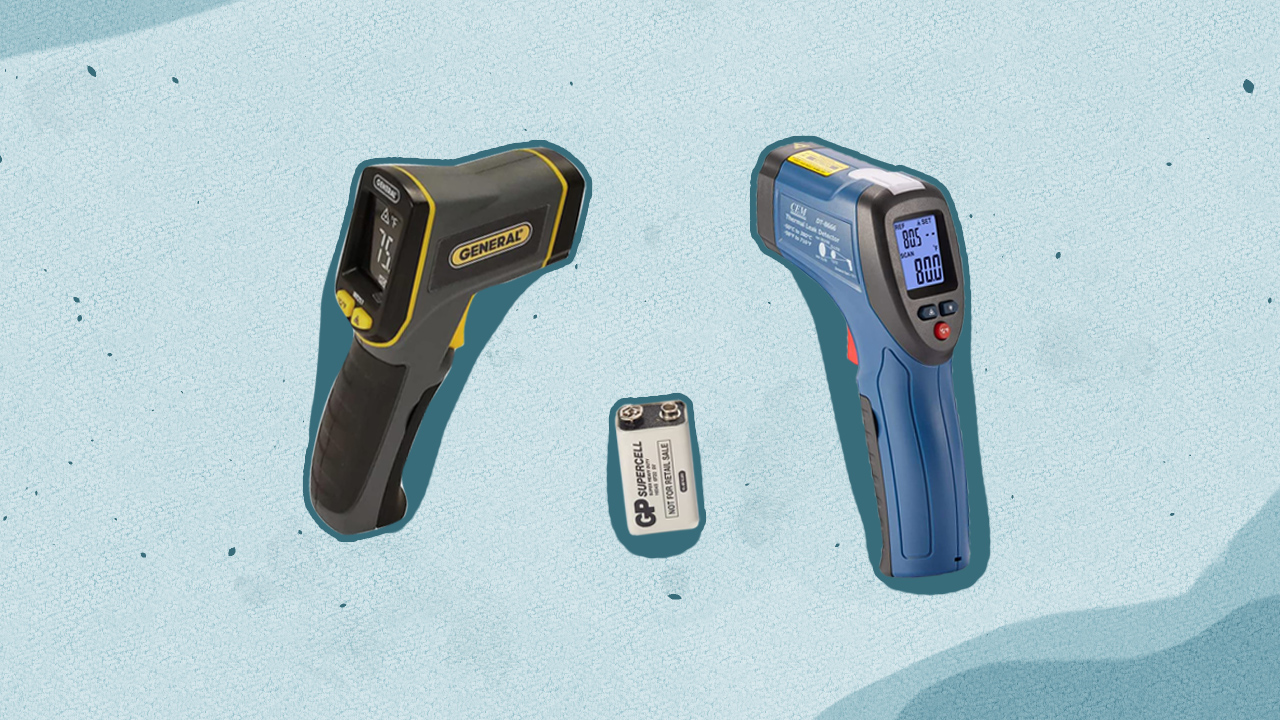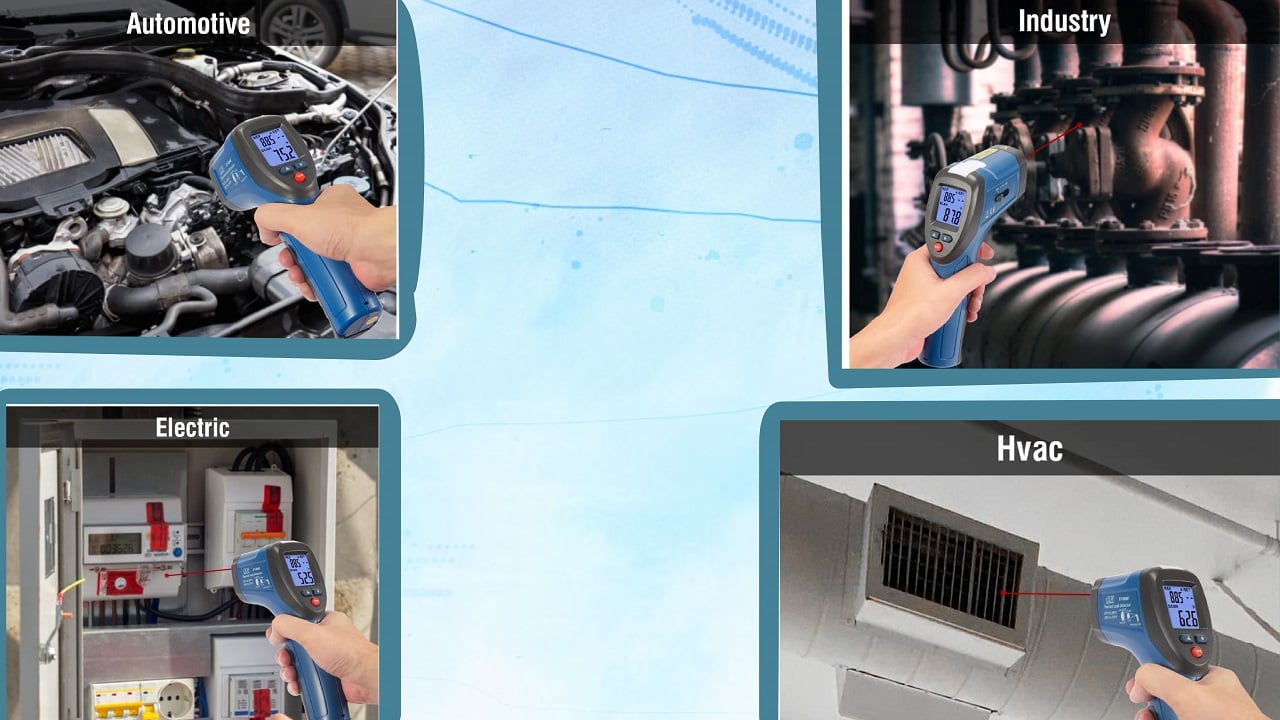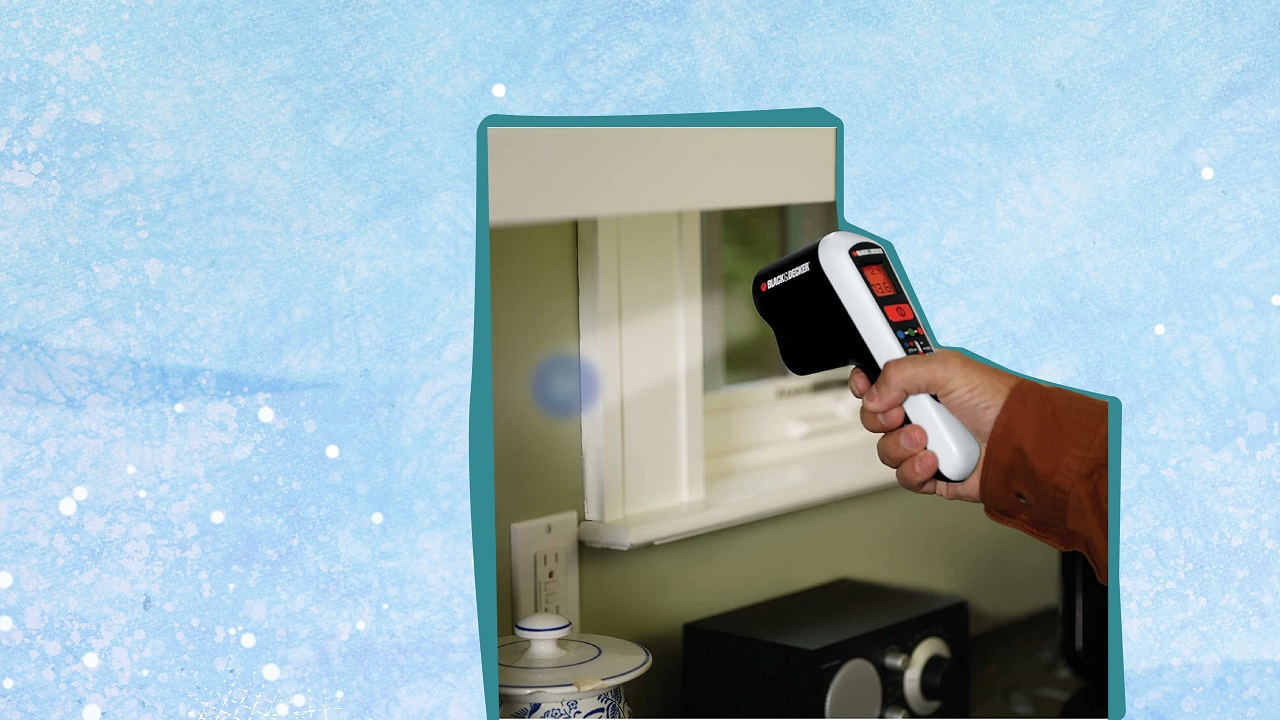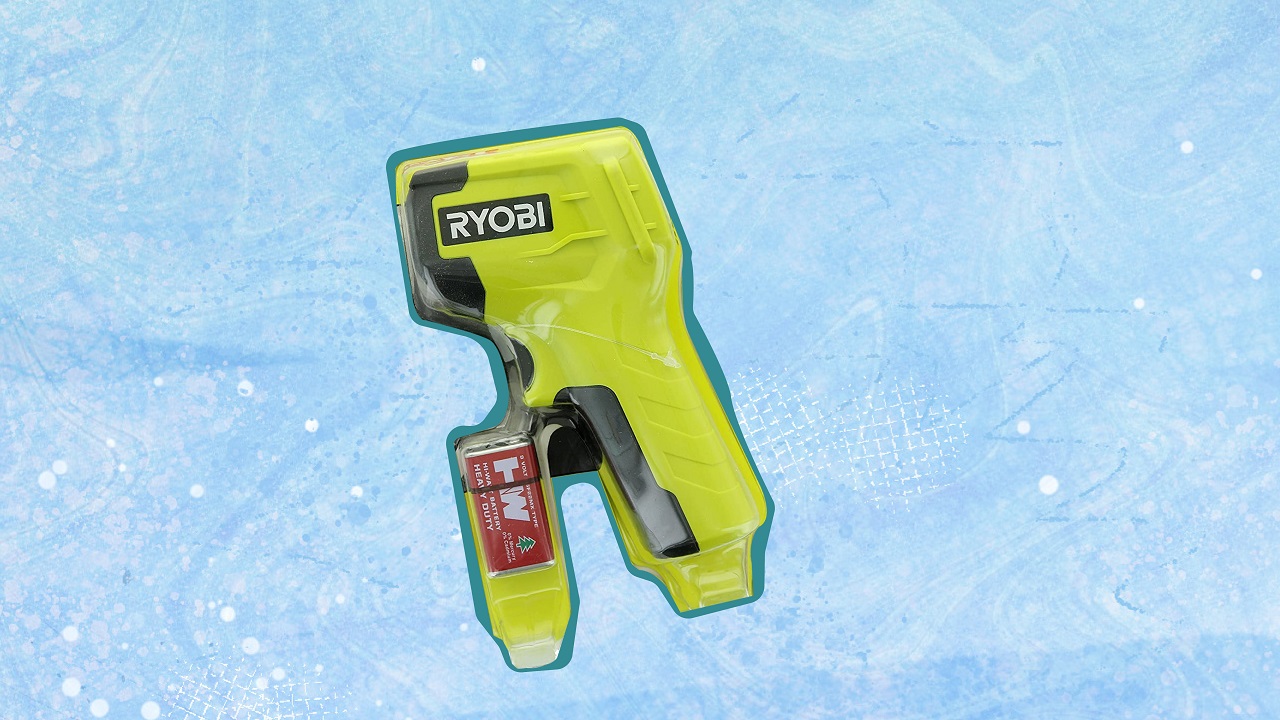Have the best thermal leak detection kits but don’t know how they work? – You’re not alone!
While leak detection kits come in handy for multiple purposes, not everyone is well aware of their inner functioning. To detect air leaks, moisture leaks, and energy leaks at home, you should know the basics of a thermal leak detector.
And that’s what I’m going to focus on in today’s guide.
Thermal Imaging Leak Detection

When it comes to detecting leaks, thermal imaging cameras are no doubt the go-to pick of plumbers, electricians, and DIYers. But have you ever wondered why professionals and enthusiasts rely on them to spot leaks?
That’s because a thermal imaging camera detects temperature differences better than other devices. With a thermal imaging camera, you can detect moisture and energy leaks by measuring temperature differences in the infrared spectrum.
Thermal cameras can detect heat signatures that are invisible to the naked eye, which is why they can read through layers of plumbing and electrical wiring.
Thermal Imaging Camera Uses
1. Water Leak Detection
Ever wondered why thermal leak detectors are popular among plumbers? Well, that’s because they come in handy for moisture detection behind walls.
What makes them great for finding leaks is that they can be used from a distance, making them perfect for hard-to-reach areas. Besides moisture problems, leak detectors can detect mold growth, so you can take timely measures to prevent further spreading.
2. Detect Leaks In HVAC Systems
Want to find air leaks in your heating, ventilation, and air conditioning system? Getting a thermal imager will help you detect leaks without calling for professionals.
And since these detect temperature differences precisely and accurately, they will detect joints and parts that are at risk of overheating. Not just that, but you can also spot loose connections and devices that are starting to fail and replace them in time.
3. Detect Leaks In Construction Sites
Thermal imagers are used by plumbers, electricians, and construction workers to find spot faults by analyzing building structures.
4. Rescue People Through Smoke
Another field where thermal imagers are widely used is in the firefighting industry because these devices help firefighters rescue people through the smoke. Also, firefighters rely on thermal cameras to quickly identify spot fires, preventing them from spreading.
Detecting Air Leaks Using A Thermal Camera
As is understood, an air leak occurs when conditioned indoor air passes through openings and cracks while filling the space with outside air. Air leaks occur through:
- Plumbing fixtures
- Rim joists
- Electrical outlets
- Attics
- Doors and windows
If there’s an air leak at your home, HVAC systems will have to work extra to compensate for the energy loss and maintain the desired temperature. This means your energy bills will be higher than what you would pay if your home had been well insulated.
Wondering how you can identify such air leaks? Well, thermal imagers will help you find leaks at home by detecting temperature variations.
All you need to do is grab a thermal imager and point it toward those nooks and crannies which you suspect are poorly insulated. Within a few seconds, your thermal imager will capture heat signatures from the field of view and turn them into a thermal image. And since every thermal camera comes equipped with an LCD, you won’t have trouble studying temperature anomalies.
Once you’re able to detect the source of air leaks, you can seal and insulate that particular area, thereby saving on heating and cooling costs.
Detecting Water Leaks And Moisture Patterns With A Thermal Camera
There’s no denying that detecting water leaks is by far one of the most challenging tasks that DIY enthusiasts can ever undertake.
Only when you crack open the floors or drill holes in walls will you be able to identify the source of water leaks. Of course, tearing down the whole wall isn’t an option for pinpointing leaks; besides time, it will cost a lot of money.
However, finding out which pipes are leaking behind the wall is important, or it will damage the structural integrity of your home. Even worse, leaking pipes provide a perfect environment for mold to thrive in the space, leading to further health issues.
The good news is that you can detect moisture patterns and leaking pipes without resorting to destructive testing, thanks to thermal imaging cameras.
Note that thermal imagers cannot see through the exterior wall but can detect temperature anomalies behind the wall well– that’s how they detect water leaks. Here’s what thermal imagers are good at detecting when it comes to water leaks:
1. Moisture
Detecting moisture in any establishment is challenging primarily because the tell-tale signs are subtle. The majority of homeowners aren’t aware that their homes are prone to moisture damage until water starts dripping from the ceiling.
Having a high-quality thermal leak detector will allow you to detect moisture patterns at home before they aggravate into something serious.
2. Hot Water Pipe
Want to figure out the temperature of the hot water pipe that’s housed behind the wall? Simply point the lens of your thermal camera towards the wall, and it will display it as a warm area. Hence, you can figure out if the temperature is ideal or is at risk of overheating.
3. Flooding
A good thermal camera will help you detect flooding behind the walls, so it’s a worthy addition to your toolkit.
4. Ceilings
Is there mold growing on the ceilings of your home? If that’s the case, then there may be a pipe leaking behind the ceiling; and you can use a thermal camera to detect the pipe that is leaking.
Importance Of A Thermal Camera In Detecting Moisture
Be it a commercial, residential, or industrial establishment, moisture can accumulate anywhere and allow mold to thrive in the environment. And if I’m being honest– moisture detection isn’t easy; most of the time, you need to drill holes in multiple walls and ceilings to identify them.
Contrary to what people say, the U.S. Environmental Agency believes that there is no foolproof way to get rid of mold spores from your home. So, no matter how much effort you undertake, mold will attack your home the moment it finds a damp environment.
The only way to eliminate mold growth from your space is to detect wet spaces in your home. Of course, you can prevent mold from growing in your home by detecting water leaks with a thermal camera.
For this reason, thermal imaging cameras have become an indispensable part of building inspection regimes. Furthermore, thermal imaging cameras help insurance carriers detect water damage, minimizing the possibility of foundational damage.
In the bygone days, thermal imaging devices were used to detect roof failures. Not just that, but they were also used in the water and fire restoration industry.
What’s The Best Thermal Imaging Camera For Leak Detection?
Not every thermal imaging camera that you come across in the market is worth it. For leak detection, you need a camera that boasts a high thermal sensitivity (low NETD) and suitable resolution.
Like regular cameras, thermal imaging devices with high resolution are capable of detecting minute temperature differences. As far as sensitivity is concerned, it’s best to go with a camera that has a lower NETD value.
For moisture and air leak detection, opting for a thermal imaging device with 30mK sensitivity would be the best bet. Conversely, a thermal camera with a 100mK sensitivity is considered ideal for detecting larger temperature differences and industrial applications.
What’s more, a camera that allows you to adjust the span and level of thermal images is considered best. Moisture problems are best identified when thermal cameras are calibrated for a temperature range of 50°F or 68°F. When thermal cameras are adjusted in this temperature range, minor temperature fluctuations stand out, allowing you to identify the issue quickly.
In this regard, the Ryobi thermal leak detector is an excellent option for both professionals and DIYers because it’s user-friendly and easy to read. And since it detects hot and cold spots accurately, you can fix the issue and save on energy bills.
Benefits Of Leak Detection Through Thermal Imaging Cameras

1. Saves Time And Effort
Be it plumbing or HVAC systems, detecting air and water leaks is like searching for a needle in a haystack. Without devices like thermal imaging cameras, you’d have to investigate every corner of the building or appliance to spot leaks. In worst-case scenarios, you’ll have to drill the walls or floors to locate the leakage.
Thankfully, thermal imaging cameras allow you to detect leaks within a few minutes. Thanks to their functionality, thermal imaging devices accurately pinpoint hot and cold spots, allowing you to fix leaks before they aggravate into something serious.
Besides saving tons of money, thermal cameras save a lot of time, so they are a must-have for every electrician, plumber, and homeowner.
2. Cost-Effective Option
It may take days to detect water and air leaks, especially if the phenomenon occurs at commercial establishments. By the time you suspect a leak in the establishment, a lot of damage is already done to the foundations of your property.
Repairing your property will cost a lot of money, much more than you can imagine. For this reason, you should have a thermal imaging camera at your establishment and inspect the plumbing and electrical systems at regular intervals to prevent damage.
How To Conduct A Leak Detection Investigation
An infrared camera detects leaks better than any other device you’ll find on the market. As a professional, there are certain questions you must ask your customers before conducting a leak detection investigation. They are as follows:
- How old is the establishment or appliance? (This will give you an idea of the severity of the problem)
- Has anything major been repaired in the building recently?
- When was the first time you noticed a leak?
- Is there a lot of space behind the wall?
Starting The Investigation
Whether you have to investigate for air leaks or water leaks, setting up the space is important before you move ahead. In such situations, having an infrared camera is useful because it takes thermal images and stores them as photos or videos, which you can study later on.
For instance, if you wish to detect water leaks, you’ll have to reintroduce water to the affected area. As a tip, always start from below and move upwards unless preliminary investigation shows that water is coming from above.
When investigating, make sure you record start and stop times and shouldn’t test one region for more than 45 minutes.
Once you’ve replicated the leak, move to a different location. I’d like to mention that whenever you duplicate a leak, always record voice notes discussing each thermal photo. That’s because thermal photos aren’t like digital ones; as such, they won’t make much sense later. Investing in a camera that allows you to record voice notes while taking snapshots would prove useful.
Taking Into Account The Weather Conditions
Sure, thermal leak detectors don’t rely on visible light to capture thermal images. But the weather conditions do affect the accuracy of thermal cameras.
What I mean is that you must pick a suitable time to check for leaks with thermal cameras. Remember that the greater the temperature difference between the inside and outside of the building, the more accurate the thermal results.
So, you need to adjust your investigation according to the weather conditions for accurate results.
That is to say, if it’s chilly outside, you must adjust the temperature of the interior of the building by turning up the heat. Likewise, thermal cameras are likely to detect accurate temperature differences when it’s warm inside. That’s because air conditioning keeps the interiors cool, which means the results would be highly accurate.
10 Things You Need To Know About Thermal Leak Detectors
Are you wondering what is the best refrigerant leak detector? As a newbie, it’s easy to get confused about which thermal leak detector you should use to complete your tasks.
Whether you’re looking for thermal cameras to detect leaks in pipes or electrical appliances, knowing some of the factors below will help you in the decision-making process. I’ve mentioned some specifications and key features of thermal cameras that you must keep in mind when buying a thermal camera for leak detection.
1. Resolution
Much like a regular camera, the resolution of a thermal camera indicates its preciseness in measuring temperature variations. Hence, the more the number of pixels, the higher the resolution.
So, thermal imaging cameras with higher resolution are able to detect even minute temperature anomalies exceptionally well. As such, they come in handy for detecting leaks hidden from the human eye from a great distance.
2. Temperature Range
Another important aspect of a thermal camera is its temperature range, which varies from model to model. As a hobbyist, temperature range may not be of much importance to amateurs, but it is of utmost importance to professionals.
Thermal cameras are able to record temperatures ranging from -4°F to 3452°F– of course, only high-end devices will detect temperatures as high as 3452°F. One way to determine if you need a high-end thermal camera is to consider the areas where you’ll be using it to detect temperature anomalies.
In case your work locations are overly warm, you must go for thermal cameras that are able to record high ranges of temperatures. Or, you can simply opt for a device with a broad temperature range that either allows you to select the temperature range manually or adjusts it automatically.
3. Focus
Like temperature range and resolution, focus mechanisms vary from model to model, meaning you get a variety to choose from. Some of the common focus mechanisms are as follows:
- Manual – accurate incremental focus.
- Fixed – point it toward the surface or object and shoot.
- Auto-focus – focuses on the object or the target automatically, but you may have to adjust it manually.
- Multifocal – snaps and stores numerous photos of the subject at different focal distances and later merges them into a single picture with high-definition depth using software.
- Laser-assisted autofocus – an inbuilt laser distance meter is used to adjust the focus
4. Lens Options
A thermal imager with interchangeable lenses scores high on versatility, allowing you to evaluate a wider range of equipment and scenarios. Macro, telephoto, wide angle, and normal– you’re spoilt for choices when it comes to lenses of thermal cameras.
5. Color Palettes
Thermal cameras with a monochromatic color palette, such as amber and grayscale, are easy to read because you can easily understand slight temperature variations. Conversely, high-contrast palettes help you find obvious anomalies faster. As such, most thermal imaging cameras allow you to change color palettes, which adds to their user-friendliness.
6. Storing Images And Voice Notes
Most thermal imaging cameras allow you to store images and, oftentimes, voice notes to either a removable SD card, USB flash drive, or in-built memory. Note that a few handheld models that take snapshots by attaching to the lightning phone port store pictures on smartphones.
7. Spot Markers
Often found in pricey models, spot markers allow users to mark certain temperatures on captured thermal images so that you can compare temperatures from multiple spots at the same time. Thermal cameras with spot markers are useful for professionals who rely on comparative data for their day-to-day activities.
8. Emissivity And Reflected Temperatures
Glossy metals or other low-emissivity surfaces give back infrared energy from other items. In such cases, measurement results may not be as accurate as with other objects. So, whenever you buy a thermal imager, make sure to check whether it allows you to adjust parameters or not.
9. Color Alarms
Most thermal cameras come with user-selectable color alarms, which notify users about regions that exceed the normal temperature range.
So, anytime you scan a region after enabling color alarms, a visible-light image will appear on the screen displaying the temperatures of everything. Such color alerts allow users to identify problems quickly, so they can focus on fixing them.
10. Battery Life And Type
No two thermal leak detectors come with the same battery life or type. One thing that I’d like to bring to your attention is that the battery charge level indicators aren’t present every time.
So, whichever model you decide to go for, check whether it features a battery charge level indicator or not. Besides, quick charging and long battery life are essential features to look for in thermal cameras.

How Does A Thermal Leak Detector Work FAQs
While thermal devices can detect temperature variations behind concrete, they cannot see through it.
As previously mentioned, thermal leak detectors don’t rely on visible light to take pictures. Instead, their special lenses focus on heat signatures emitted by objects or living beings, which they can capture at any time.
Tip
To detect minute temperature differences, slide the slider from the back of the detector to the 1° mark. Conversely, you’ll have to move it to the 5° mark for detecting medium temperature variations and slide it to the 10° mark for identifying large temperature differences. As for the threshold setting, you can adjust it when using the camera for leak detection.

How Does A Thermal Leak Detector Work Summing It Up
So, the workings of a thermal leak detector are simple; as such, it can be used by both novices and professionals to identify leaks.
Air leaks, water leaks, or energy leaks– no matter what you wish to detect, a thermal leak detector is a must-have in the toolkit of every homeowner. Best of all is that thermal cameras don’t rely on visible light to capture thermal images, so you can use them in areas with little to no light without worries.
When shopping for thermal leak detectors, make sure you set a budget because they are available in a variety of price ranges– I’m sure you wouldn’t want to overspend. Also, take into account the thermal resolution, battery life, and other features mentioned above to make sure you invest your hard-earned money in the right product.
That said, it’s time to wrap up my guide on the topic. Hopefully, you’ve learned a thing or two about thermal leak detectors.
Bye for today!


